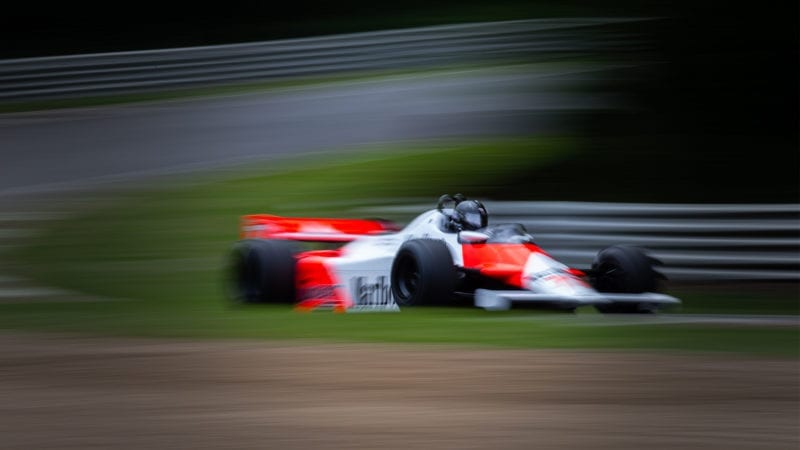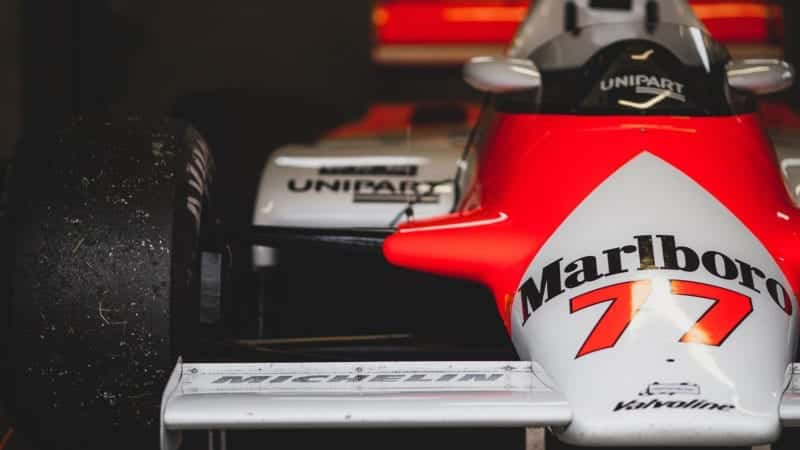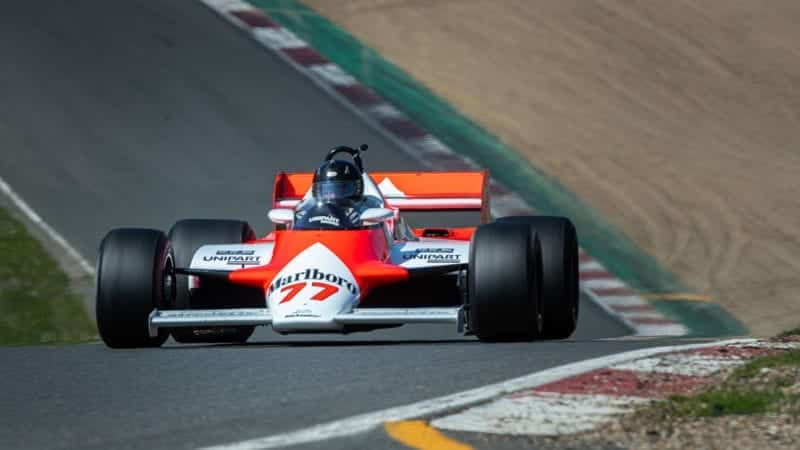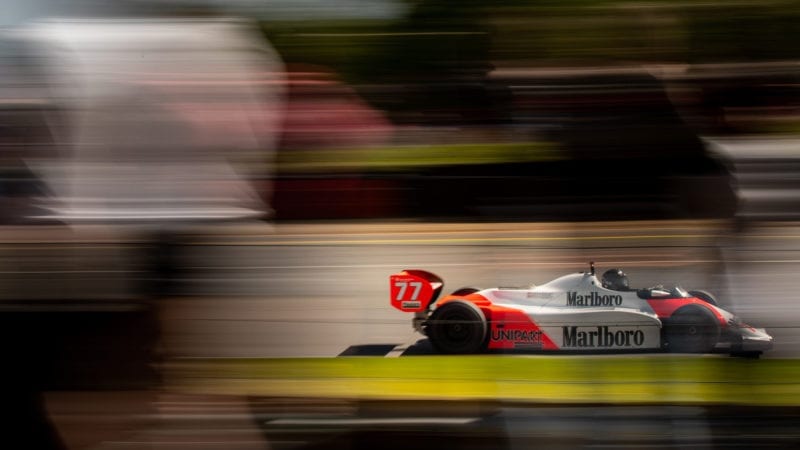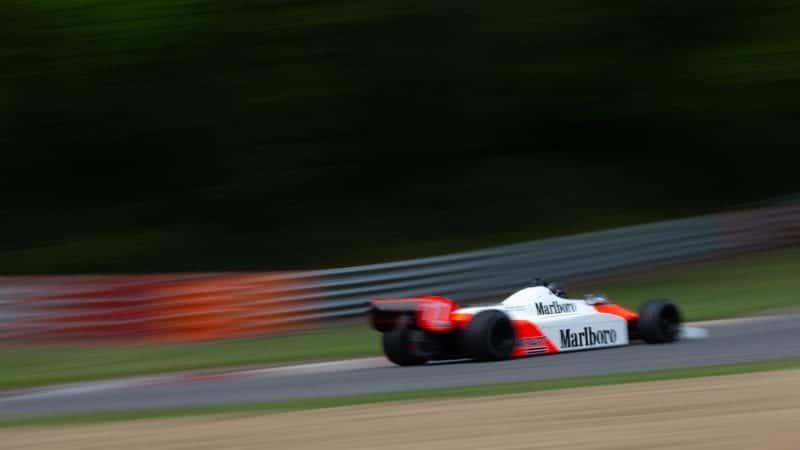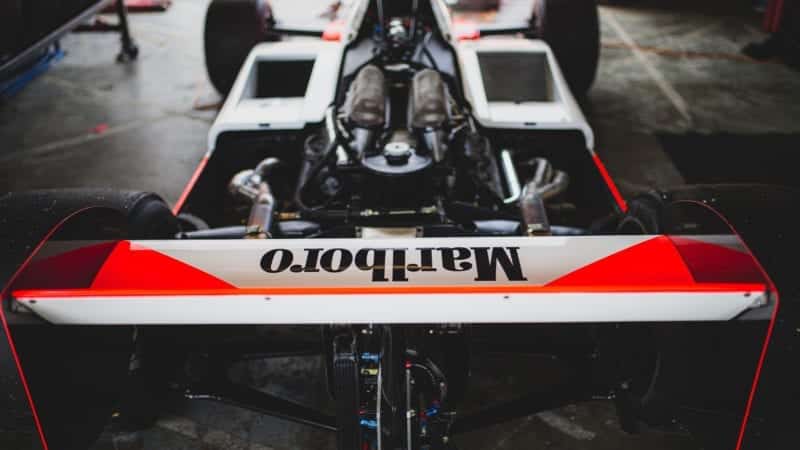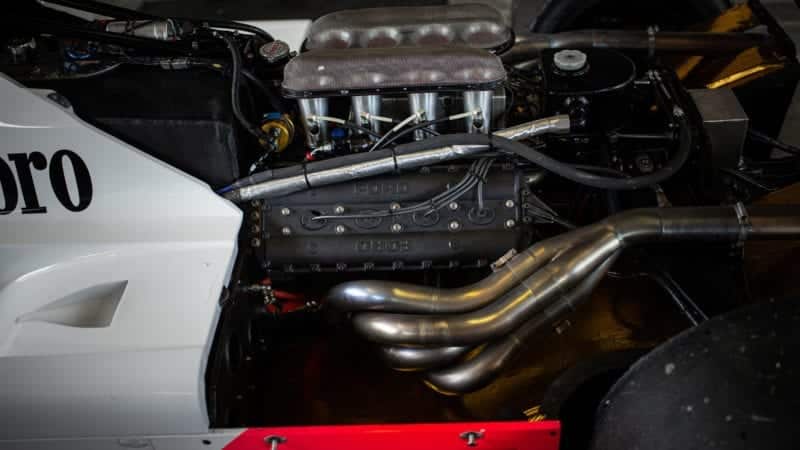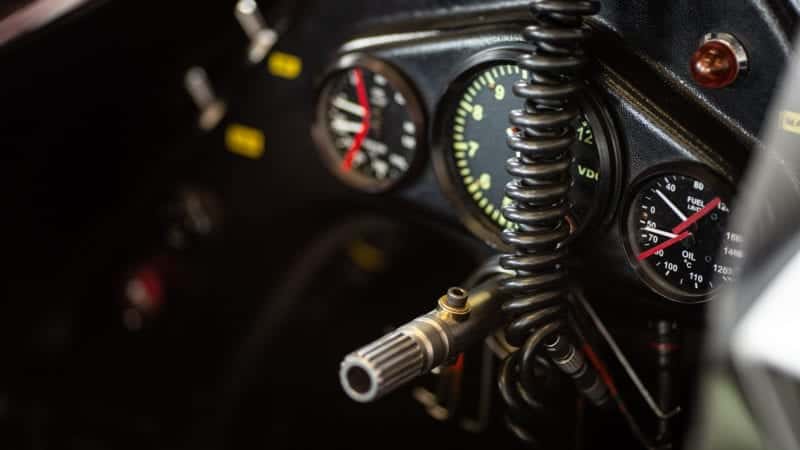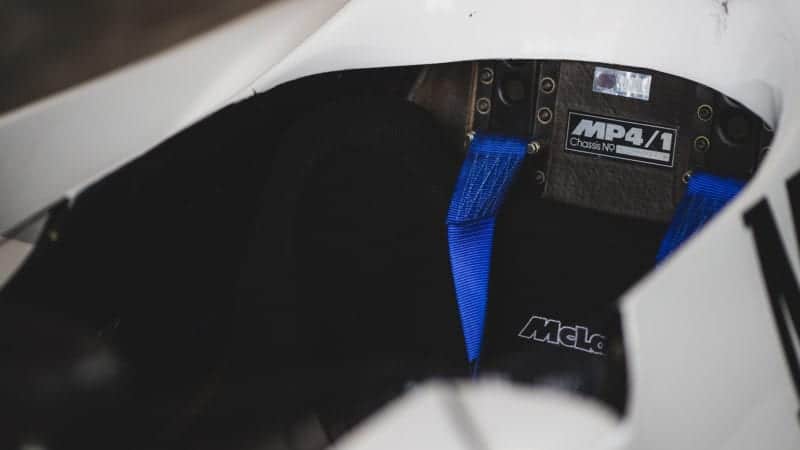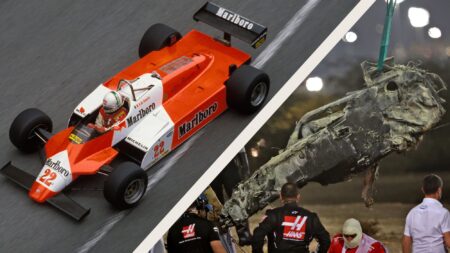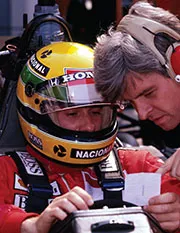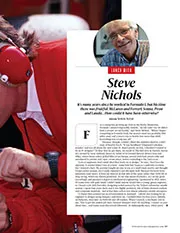The race itself was chaos from the start: six cars were out of the race before three laps were chalked off, as Mauro Baldi’s Arrows ploughed into several fellow tail-enders at the hairpin. The red flag was deployed four laps later when Riccardo Patrese’s Brabham was caught in the aftermath of a crash between Roberto Guerrero and Elio de Angelis, catching fire after hitting the wall.
At the restart, Alain Prost looked to be stretching out an unassailable lead in the Renault until engine trouble allowed Keke Rosberg through. At the same time, Watson and the McLaren had found their groove: the Michelin tyres that had struggled to heat up in qualifying, were proving fast and durable.
Watson was 13th for the restart, but had already climbed to seventh after 21 laps and was on the tail of team-mate Lauda. A crash and a pitstop moved Watson up to fifth and the race looked settled, Jenkinson reported.
“But one lap later a remarkable thing happened. Watson overtook Lauda, Cheever and Pironi all in one lap, not in a scuffle as seemed probable, but one at a time, each under braking for a different corner! Even ‘Wattie’ wasn’t sure how it happened, he was just into a nice rhythm and did not want to spoil it”
Rosberg was helpless to resist the charging McLaren and, with thinning tyres, dropped behind Watson on lap 31. Watson sped away and, at the end of it, was victorious by a gap of 15 seconds over his nearest challenger, Eddie Cheever.
Unsurprisingly, it was a win that lived long in the memory of Watson. And when a chance encounter got him chatting to Hartley, the Worcestershire businessman was sold on the car.
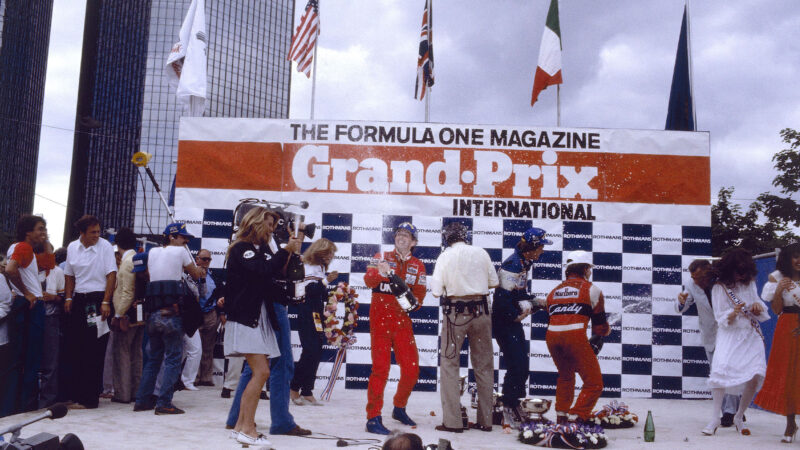
Watson celebrates victory in Detroit
DPPI
Hartley says that he always wanted to race, after a childhood spent filling schoolbooks with doodles of racing cars and jet aircraft. Although he dabbled with other cars the aim was always an F1 car and after campaigning an Arrows A4 he had his eyes set on a better machine. “I always thought I would buy a Williams, an FW08,” he says. “But the McLaren came up for sale and then the strangest thing happened, I was on a flight home from the Monaco Historic and John Watson was stood next to me in the queue for the aircraft. We struck up a conversation and chatted about the car all the way home, he was even more enthusiastic about it than I was!”
Easy isn’t a word that springs to mind when thinking about the task of piloting a grand prix machine, but that is exactly the adjective that Hartley uses when describing what it’s like to drive. “I would get out of the Arrows, and I would be sweating buckets, the MP4 isn’t fatiguing in the same way at all, it’s just so easy. It’s so much more advanced than the Arrows, every little detail is taken care of, to ensure maximum performance is achieved from the investment McLaren made in developing the carbon fibre technology; the chassis alone probably cost more than Arrows budget for their entire car! Ron Dennis is an absolute perfectionist, and it shows in this car.”
